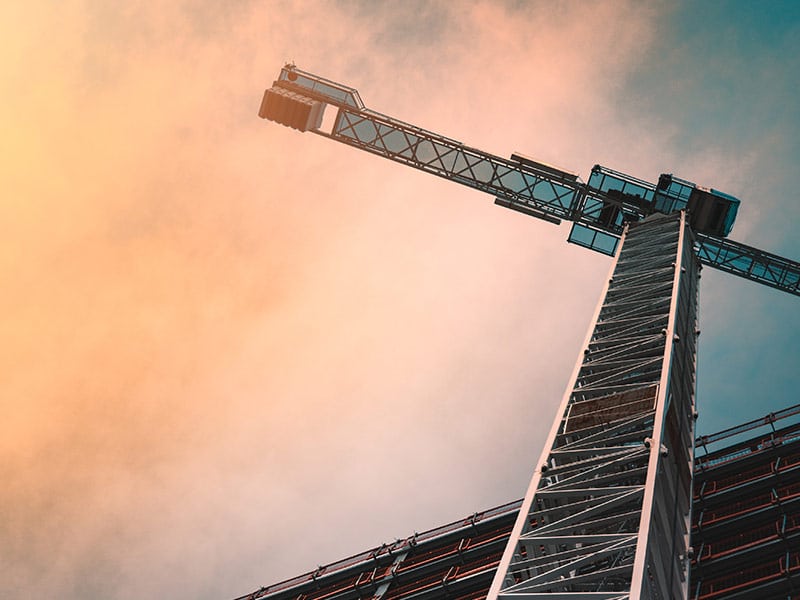We work with contractors to assess the suitability of any proposed on-site works and to provide guidance and support to reduce noise and vibration at the neighbouring receptors.
What to consider when conducting a noise risk assessment
- August 21, 2020
In recent years, the knowledge that noise at work can cause permanent and disabling hearing damage has impacted the design and construction of workplaces in the UK, especially those where manufacturing processes are part of the day-to-day activity.
The Control of Noise at Work Regulations (2005) legislation made it compulsory for businesses to take action to both reduce exposure to noise wherever possible and to provide workers with training and equipment (personal hearing protection) to control the risk from noise. Under the terms of the act, employers also have a duty to carry out regular health surveillance and risk assessments to ensure that everything practicable has been done to mitigate the effects of exposure to noise.

Assessing the risk
The first step is to establish whether your workplace has a noise problem before deciding which steps to take to prevent harm. A few common-sense checks should give you a view of the level of risk presented and guide you towards establishing a sensible policy that has employees’ best interests at heart.
If your business includes noisy tasks – like construction, demolition, engineering or manufacturing, for example – has background noise levels that force employees to raise their voices in order to carry out a normal conversation or requires employees to use power tools on a regular basis, it’s likely you’ll need to take some action.
A noise risk assessment should:
- Flag noise sources and consider whether the noise is intrusive
- Identify who may be affected
- Estimate the extent of employee exposure
- Highlight essential compliance actions
- Note any at-risk employees and recommend appropriate health surveillance
You’ll need to make a record of your findings and outline a plan of action – detailing the noise-control measures and/or protection equipment required – complete with a timetable. Make sure that your noise risk assessment is carried out by a competent assessor; use an external consultant if you’re unsure how to proceed.
Noise risk assessment tips
- Pinpoint the locations you expect to have the highest noise levels and focus on these areas first.
- Employees’ exposure to noise might vary during the day, so make sure you get a feel for the changing noise levels throughout the day.
- Prioritise any employees who are showing early signs of hearing loss – check their use of hearing protection and provide more training and information.
- You shouldn’t have to shout to hear someone standing a metre away. If this happens, measure sound levels and check them against exposure action values.
- Don’t forget about the potential noise nuisance from mobile plant – map when and where it’s used and note which employees are being exposed.
Taking control of your environment
One of the best long-term fixes for excessive noise in the workplace is choosing quieter equipment. Whether you operate a buy or hire policy, begin consultations on replacement machinery at an early stage and ensure you specify low noise output levels.
Manufacturers have a legal responsibility to design and build machinery so that the noise produced is ‘as low as possible’, as well as to provide information about the noise machinery produces. Installation implementation and maintenance methods may all affect operating noise, so make sure you’re well informed at every stage. Keep a record of the decision-making process to prove you’ve paid attention to due diligence.
Focus your efforts on controlling noise risks and on reducing noise exposure with a planned programme of noise control. Often, a few simple and inexpensive actions can make a big difference.
- Install sound-reducing screens or noise enclosures
- Review your workplace layout to create quieter workstations
- Limit the time workers spend in noisy areas
Hearing protection
You should issue personal hearing equipment to workers when extra protection is required over and above the additional sound-suppressing measures already implemented – or as a short-term fix (in the case of limited exposure to mobile machinery or traffic, for instance). It’s important to note that hearing protection shouldn’t be used as an alternative to introducing broader noise-control measures.
It’s your job to make sure that employees understand how to use hearing protectors effectively and to indicate where in the workplace the equipment should be used, via appropriate signage.
- Choose a suitable (CE-marked) protection factor (delivering < 85dB at the ear)
- Consider comfort and hygiene as well as compatibility with other protective equipment, such as hard hats or eyewear.
- Ask wearers to report any defects or deterioration in condition.
Ask the experts
Nova Acoustics provides a bespoke and professional acoustic testing service for noise at work surveys. Contact us on 0113 322 7977 for expert advice from our friendly team.
Recent posts
As urban areas continue to expand and human activities thrive, environmental noise pollution has become a significant concern.
Poor Sound Insulation is an issue that plagues many houses both small and large, through the development of noisy hobbies such as gaming systems, drum kits or food processors, or simply poorly soundproofed properties.










